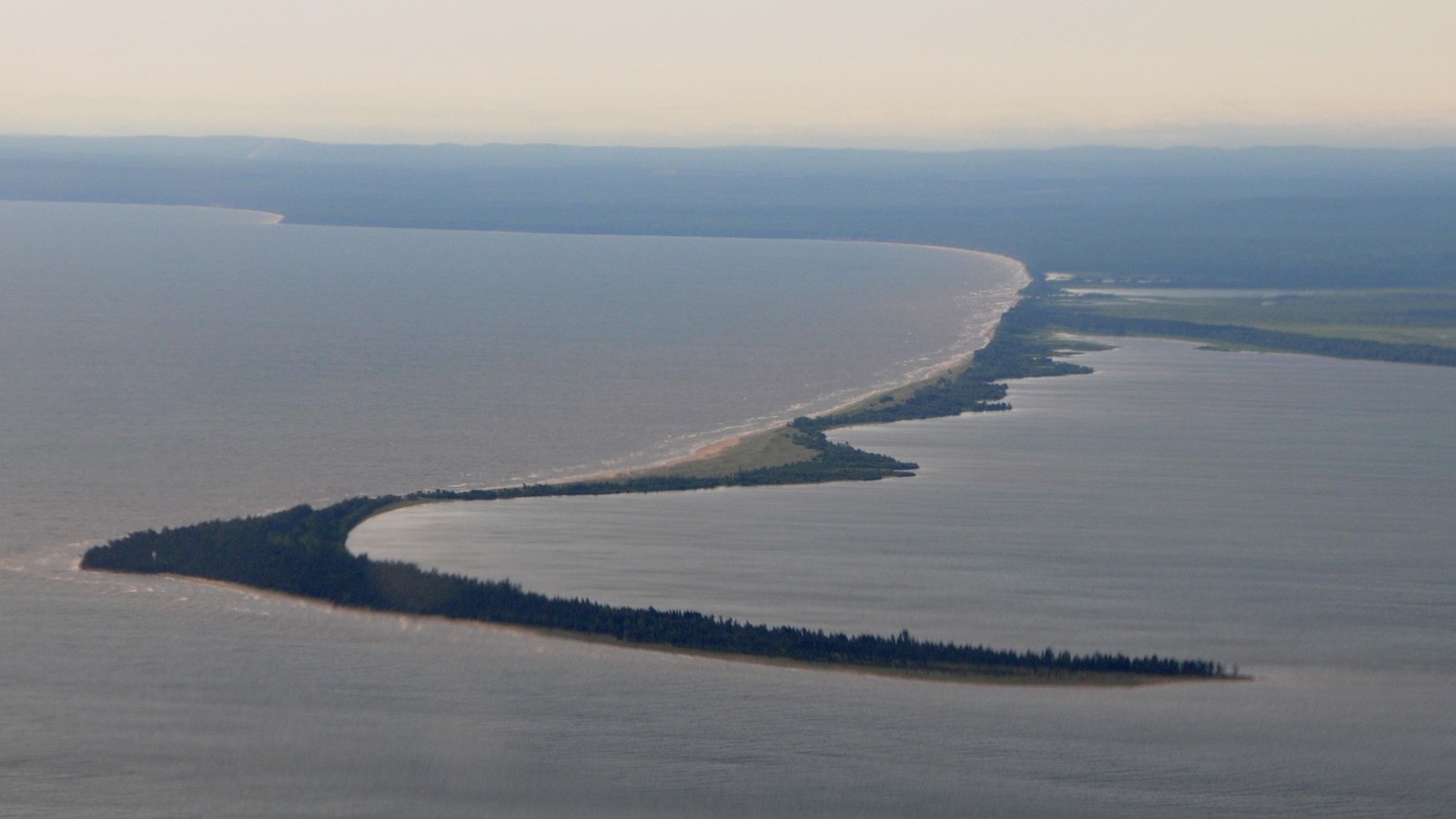Last updated: October 1, 2021
Place
Long Island - An Island Apart

NPS photo
Animal-Safe Food Storage, Beach/Water Access, Fire Pit, Picnic Table, Toilet - Vault/Composting
Zaagawaamikong-neyaashi (Long Island) is unlike any of the other Apostle Islands. It was the last island added to the Apostle Islands National Lakeshore. Most of the park was established in 1970 but a 1986 act of Congress authorized the inclusion of “approximately 200 acres of land at the mouth of Chequamegon Bay known as Long Island” into the park. The island is composed almost entirely of sand and has no obvious bedrock pedestal beneath it. Perhaps most importantly, Long Island (at least for now) is not an island at all! It changed from an island to a continuous part of a peninsula many times, usually persisting in one form or the other for a few decades. It is presently part of a peninsula and has been since the mid-1970s.
Getting There
Public access to Long Island is by private boat, water taxi, or kayak. The land on the peninsula east of the park boundary belongs to the Bad River Nation. The tribe controls and limits use of their lands. Water depths are very shallow at all approaches to the island. Most visitors beach their boats.
No maintained trails exist on this island. In spite of challenging access and lack of facilities, the island remains a popular place for summer activities like swimming, sunbathing, picnicking, and walking on the beach.The island has one designated campground, located about one half mile southeast of the LaPointe light station. The site includes a picnic table, bear resistant food locker, fire ring, and privy. A permit is required to camp here.
One Island… Two Lights
Long Island is the only Apostle Island to have two active navigational lights. In 1858, the LaPointe lighthouse, a one and one-half story wood frame dwelling with a short square tower on the roof, was built on the north shore of Long Island as the second lighthouse in the Apostles. In 1997, the U.S. Lighthouse Board replaced the original lighthouse with two new towers, one to the east and one at the end of Chequamegon Point to the west of the first lighthouse. The new LaPointe light tower is a 67-foot-tall cast iron cylinder, while a 42-foot pyramidal skeletal tower stands at Chequamegon Point. By 1987, beach erosion near the foundations of the Chequamegon Point light tower forced the U.S. Coast Guard to move the tower about 100 feet back from the shore. The move damaged the tower – the beacon now rests on a nearby modern cylindrical structure.
Unique Habitat
The wide undisturbed beaches on Long Island are not only attractive to people but are the only places in the state where a small endangered bird successfully nested in recent years. Piping plovers, sand colored shorebirds, arrive on Long Island in late April to early May to lay their eggs in shallow nests. Well camouflaged eggs and young may go unnoticed to visitors.
FYI
Island visitors must be aware of the following:
Closures
Fencing protects piping plover nests from predators and human activity. When you arrive at an area that is closed due to piping plover nesting activity, you may see a metal fence enclosure (approximately 12 feet across) surrounded by signs and a twine fence (approximate 100 feet across).
Poison Ivy and Deer Ticks
Long Island is the one place in the national lakeshore where poison ivy is common. The short plant, with clusters of three leaflets, is scattered across many of the vegetated dunes on the island.Deer ticks, common on Long Island, can transmit Lyme disease and Ehrlichiosis. If you notice a rash, flu-like symptoms, or joint pain following a tick bite, call your physician.
Park Rules
Long Island visitors are subject to the same National Park Service rules and regulations that apply in the rest of the national lakeshore. Particularly note the following:
-
Respect all areas fenced or posted for the protection of wildlife.
-
Dogs must be on a leash six feet or shorter at all times – 36 CFR 2.15 (a) (2).
-
Permits are required for camping – 36 CFR 1.6 (g) (1).
-
Visitors MUST pack out all trash.
